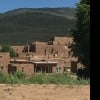The Isle of Man and the Manx Gaelic language
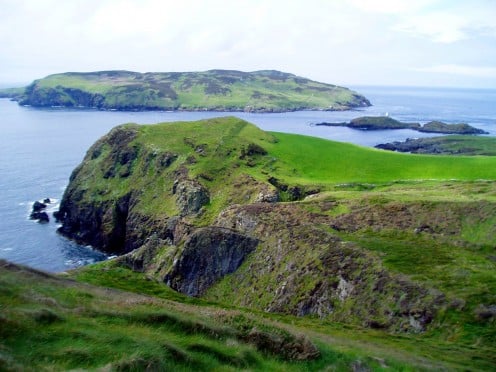
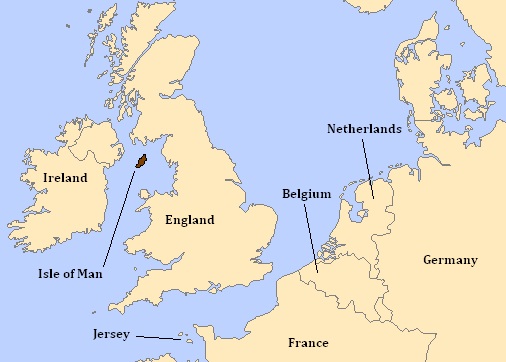
Isle of Man TT motor bike race

Brian Stowell on native Manx speakers
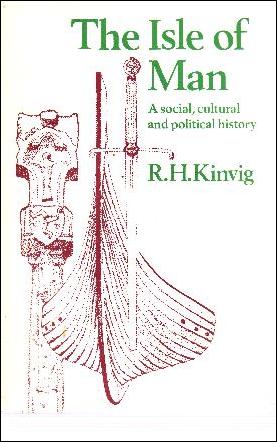
The Isle of Man or Ellan Vannin, as it is called in Manx, the original Celtic language of the island, is a beautiful island located in the middle of the Irish Sea. It is 220 square miles total area and it lies an equidistant from Scotland, Ireland and England.
The island is steeped in Celtic folklore and mythology and legend has it the island's name comes from the Celtic sea god Manannan mac Lir who protected the land from invaders by shrouding it in a cloak of mist.
These folklore stories and legends are carefully protected by the Manx people to ensure the island doesn't lose its unique charm and allure. It is a popular and favorite vacation spot for those of Great Britain and around the world.
Celtic stone crosses ~ Viking burial grounds ~ heritage landmarks all tell the interesting story of the Isle of Man. The island hosts its annual inter-Celtic festival - Yn Chruinnaght in which the Manx Gaelic language and songs and dances are celebrated
It has English Crown dependency but it is NOT part of the UK (United Kingdom) or EU (European Union). The head of state is Queen Elizabeth II of the British Isles and she holds the title of Lord of Man. The Lord of Man is represented by a Lieutenant Governor, but its foreign relations and defense are the responsibility of the British government.
The island is, however, autonomous and governs itself and boasts the world's oldest Parliament and governing body in the world, Tynwald.
It is the birthplace of the Bee Gees and it hosts a world famous Isle of Man TT (Tourist Trophy) motorbike race annually. (the last week in May and first week in June). If you have the "need for speed," you might want to check out this exciting motorbike race that covers the island.
The island is a combination of cities and towns along the coastline and plush green countryside in the interior. It had a pastoral beginning of sheep herding and eventually evolved into a farming and agricultural economy.
Today, it is one of the six modern Celtic countries that has managed to hang on to its original Celtic language bringing it back from extinction. The six modern Celtic languages are:
- Irish
- Scottish Gaelic
- Welsh
- Breton (Brittany, France)
- Cornish (Cornwall, England)
- Manx (The Isle of Man)
Today, the two official languages on the island are English and Manx, although Manx is spoken by the inhabitants of the island and English is always used in government and business dealings on the island.
As of 2001 census, there are a few hundred fluent speakers of Manx including a small number of children who have grown up in Manx speaking homes. Manx has been taught in all the schools on the island since 1992 and Manx classes have been quite popular.
The last native speaker of the Manx language was Ned Maddrell who died in 1974 on the island at the age of 97. At the time of his death the Manx language was declared extinct but recently the language has been the subject of great revival efforts.
What has helped with the revival of the Manx language is the native language was well-recorded featuring examples of native speakers before they died. The man recognized as the leader of the Manx language revival on the island is Brian Stowell (1936 -) who recorded the native speakers in the 1960's and 70's.
Stowell is given credit for single-handedly reviving Manx on the island. He became fluent in Manx as a student and made the tape recordings of its elderly speakers before they passed on. He also became fluent in Irish and translated Irish language courses into Manx.
He also translated Carroll's Alice in Wonderland into Manx and published this in 1990, and he published The Vampire Murders, in 2006, the first full-length novel written in Manx.
In 2008 he received the Manannan's Choice of the Year Award, given by the Manx Heritage Foundation for his outstanding contributions to the Manx language and culture.
In 2010, on Tynwald Day, he was awarded the Tynwald Honour, the highest honour given out on the Isle of Man, again for his work in reviving the Manx language.
The Manx language is probably the more complex of the Goidelic languages from which it is derived, specifically Irish and Scottish Gaelic. To understand the influences on the language a look at the history of the Isle of Man is a must.
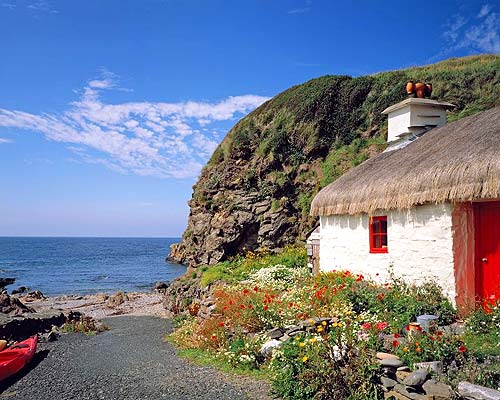
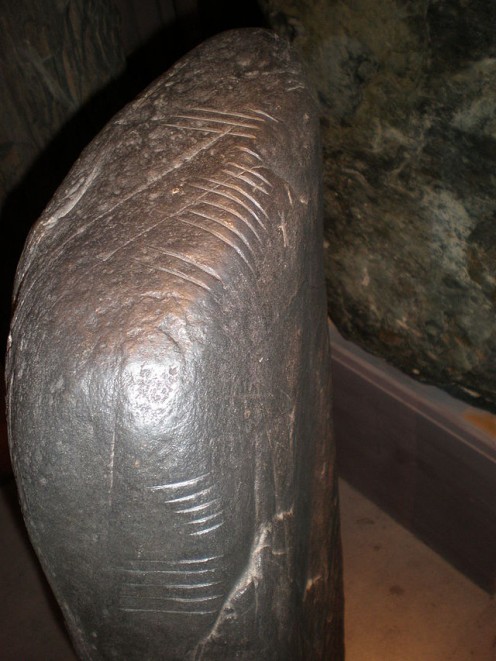
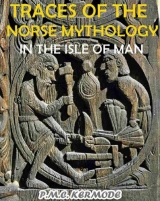
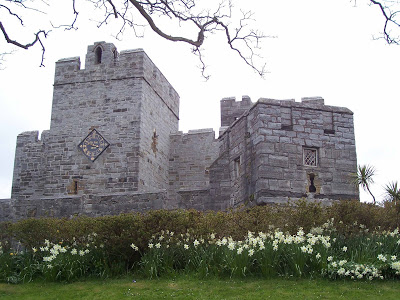
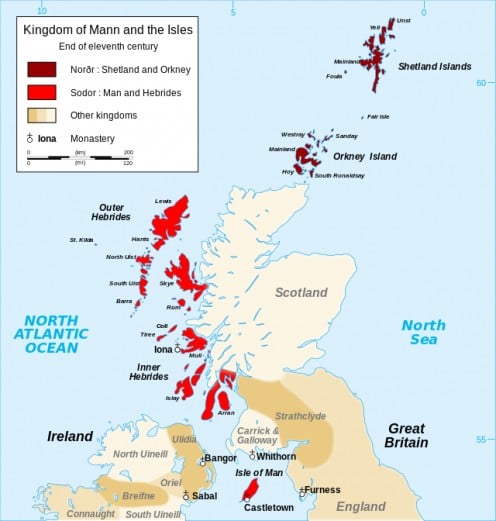
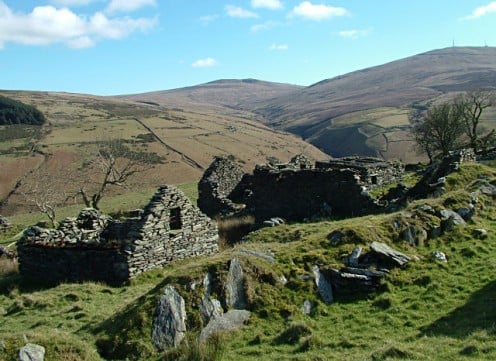
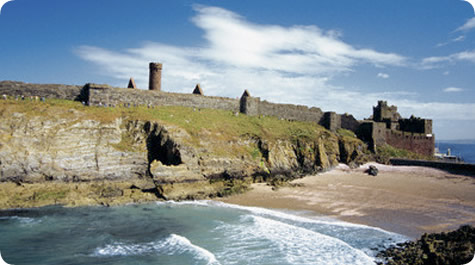
The History of the Isle of Man
The Isle of Man has been around for a long time, specifically from about 8000 BC. Rising water levels cut the island off from surrounding islands and it has stood alone since approximately that time. Archaeological evidence suggests that the colonization of the island by sea took place sometime before 6500 BC.
The first residents lived in small huts and were hunters, fishers and gatherers of their food. They used small tools made of flint or bone and archaeological examples of these have been found on the island near the coast. Today, the Manx Museum on the Isle of Man houses these relics.
The Neolithic period brought the knowledge of farming, better stone tools, and pottery making. Also during this period the megalithic monuments began to appear around the island. They were used as communal tombs.
For example, King Orry's grave at Laxey was found at Cashtalyn Ard near Maughold, and the Meayll Circle of stones is near Cregneash on the island.
The Bronze age brought smaller burial grounds to replace the communal tombs of the megalithic builders.
With the Iron Age came the Celts who inhabited the island and brought their cultural influence. There is archaeological evidence of hill forts that appear on hills, summits and smaller forts along the coastal cliffs. There is evidence of framed round houses of the Celts.
It is believed the first Celts to inhabit the island likely were the Britons from mainland Britain and they brought their Brittonic language with them. This was the first Celtic language on the island.
Interestingly, the Romans never conquered the island, so there is no Roman influence here as there are with other Celtic nations. The secular history of the Isle of Man during this Celtic period remains a mystery and it is speculated that the island may have become a haven for the Druids and other refugees from Anglesey (in Britain) after the Sacking of Mona in 60 AD.
Edwin of Northumbria in 616 did conquer the Isle of Man and Anglesey, but this did not last long. During this century came the cultural influence from Ireland and the migration brought a process of Gaelecisation as evidenced by the Ogham stone inscriptions found on the island. This evidence is proof of Primitive Irish influence on the island.
It is the Primitive Irish, followed by the Middle and Modern Irish, which is a Goidelic language long with Scottish Gaelic, that took over the Brittonic languages and that gave rise to the Manx language. It is generally believed by scholars that the Irish invasions or migrations formed the basis for the modern Manx language. It is believed the first dialects the islanders spoke was identical to the Gaelic of Ireland.
Land divisions and place names attest to this and today of the 1500 place names on the island about 68% are Celtic. The same is with the surnames on the island; of 170 names about 65% are Celtic names.
Ecfrid's Northumbrians who in 684, laid waste in Ireland from Dublin to Drogheda, also temporarily occupied Man, but they also caused the migration from Ireland to the Isle of Man in the first place.
Also, around this time, St. Maughold (Maccui in Manx), an Irish missionary converted the island to Christianity and gives his name to a parish on the island. And, a number of Columban monks (followers of St. Columba) resided on the Isle of man until about the end of the 6th century, so the island was converted to Christianity early on.
The Celtic era of the Isle of Man lasted from the Iron Age to the Scandinavian Period which began around the 9th century.
After the brief conquests of the Northumbrians and the migration of the Irish to the island, came the period of Scandinavian rule and dominance on the island. And, of course, with that came the Norse influence in the culture and Manx language.
There are two main eras on the Isle of Man that can be broken down to:
- before the conquest of Godred Crovan, a Norse king, in which there was unsettled rule and warfare on the island
- after Crovan's conquest in which there was relative peace on the island
At first, the Vikings came to plunder the island and did not stay long. Then, from 850 to 990 AD the Vikings returned and settled in to live on the island. Now the island fell under the rule of the Scandinavian Kings of Dublin and from 900 to 1079 the island came under the dominance of the powerful Earls of Orkney.
This is evidenced by the mint produced coins on the Isle of Man between c.1025 - c.1065. They were minted from an imported type 2 Hiberno-Norse penny die from Dublin. These coins were first minted under Sihtric, the King of Dublin.
Godred Crovan, Norse king, invaded the Isle of Man around 1079 AD and created the Kingdom of Man and the Isles. His successors continued to take this title. His kingdom included the southwest islands of Scotland (Sodor) until around 1164 AD when two separate kingdoms were formed. Also originally under this rule were the Hebrides islands and other small islands of Scotland
During the 1130's, the Catholic Church sent a small mission to establish the first bishopric on the Isle of Man, Wimund, who became the first bishop. By 1154 The Diocese of Sodor and Man was formed under the Church of England.
From approximately 1113 to 1152, Crovan's son Olaf ruled and maintained considerable power and a close alliance with the kings of Ireland and Scotland. During this period, no one disturbed the island which relatiely had a time of peace.
Olaf's son, Godred (reigned 1153-1158) but lost the smaller islands off the coast of Argyll. During this Scandinavian period, the rule of the Isle of Man remained under the overall rule of the Kings of Norway.
Then, from the mid-12th century to 1217 the Isle of Man came under the control and power of the kingdom of Scotland. This period of Scots control would preceded the establishment of full English control. Hence, the Scottish Gaelic language had some influence over the Manx language.
During the 13th century, Scot Ragnald (reigned 1187-1229) paid homage to King John of England (reigned 1199-1216) and during this time the English intervened in the affairs of the Isle of Man, much to the consternation of the Scots.
Alexander III of Scotland, in 1261, sent envoys to Norway to negotiate the cession of the Isle of Man to Scotland but the Norwegian king resisted. This caused hostilities to begin and and Alexander defeated the Norse. Magnus Olafsson, King of Man and Isles (reigned 1252-1265) was forced surrender all the islands to Scotland.
So even with the Norse language and influence the Celtic element remained in the Manx Gaelic language and is attested to on the stone crosses from the 12th century AD. Of these crosses, 42% of the names are Celtic and not Scandinavian.
It was the Treaty of Perth (1266) in which King Magnus VI of Norway formally ceded the islands including the Isle of Man to Scotland.
Then, in 1290, King Edward I of England sent Walter de Huntercomb to take possession of the Isle of Man and it remained in English hands until 1313 with English being spoken on the island now as well as Manx.
Scot, Robert the Bruce took over the island after besieging Castle Rushen for five weeks. From then until about 1346 was a period of confusion as the Isle of Man went back and forth under Scottish and English rule.
Finally, Sir John Stanley in 1406 became the English governor of the Isle of Man and now it became a more settled era in the Isle of Man's history under English rule. The English language accompanied Sir Stanley to the island and English also had an influence on the Manx language.
In 1765, the lordship was revested into the British Crown but the island never became part of the Kingdom of Great Britain or its successor the UK. The Isle of Man has retained its status as an internally self-governing Crown dependency through to today.
With the Isle of Man changing hands so many times and with so many different influences on the island, it begs the question:
Does the present day Manx Gaelic language survive from pre-Norse days or does it reflect a linguistic reintroduction after the Norse invasion?
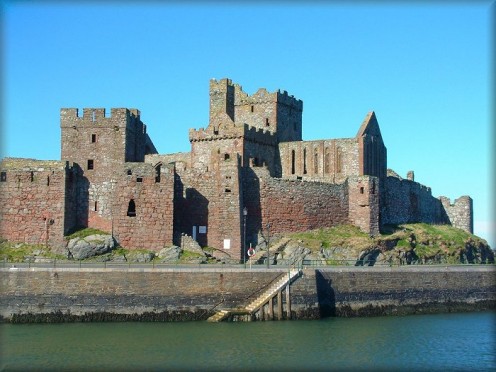
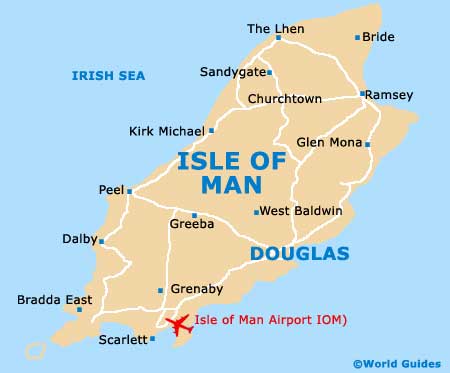
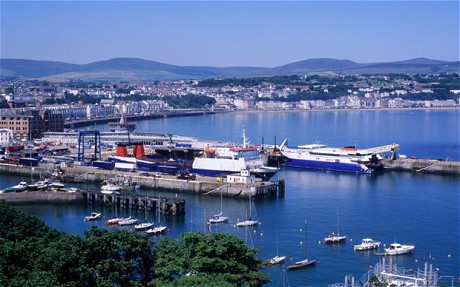
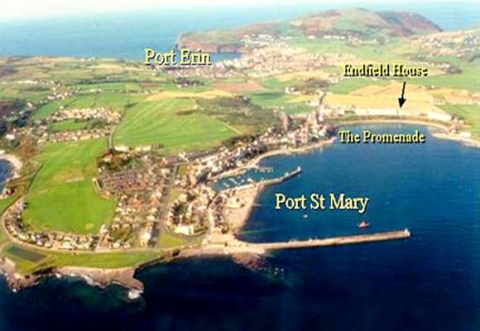
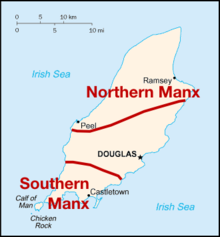
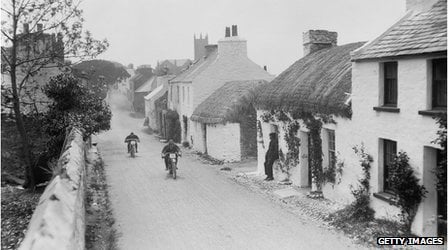
The Manx Language
Ellan Vannin are the Manx words meaning Isle of Man and come from the earliest form of Man which is Manu or Mana. it appears in the genitive case Vaninn, hence Ellan Vannin = Isle of Man.
The two official languages on the Isle of Man are English and Manx, also known as Manx Gaelic or Manks language. It is from the Goidelic language of the Indo-European language family and has been historically spoken by the Manx people. Only a small minority of the Isle of Man's population is fluent in it today, but a larger minority has some knowledge of it. It is considered to be an important part of the island's culture and heritage.
The Manx language is called Gaelg or Gailick and shares the same etymology as the English word Gaelic. Irish and Scottish Gaelic are the two sister languages to Manx. Irish and Scottish use Gaelige and Gaidhlig respectively for their languages.
To further distinguish it from Irish and Scottish Gaelic the phrases Gaelg/Gailick Vannin (Gaelic of Man) and Gaelg/Gailick Vanninnagh (Manx Gaelic) may also be used. These are also used to avoid confusion with Anglo-Manx, the form of English spoken on the island. We will look at Anglo-Manx later.
The language is just referred to in English as Manx. The word Manx is frequently spelled as Manks historically, particularly by the island natives. The word means Mannish and originates from the Norse Mannish
The name of the Isle of Man is frequently spelled as Mann and it is a two syllable word, pronounced "MAN-en." It comes from the name of the Celtic god Manannan mac Lir.
Although Manx is a Goidelic language and its sister languages are Irish and Scottish Gaelic, it is NOT mutually intelligible with these two languages, though speakers can sometimes understand the gist of what the others are saying.
It is most closely related to Ulster Irish and Scottish Gaelic of Galloway and was brought to the island by settlers from those areas during the 5th century BC.
Manx descended from Primitive Irish, even though the earliest form of language on the island was the Celtic Brittonic language. Primitive Irish is attested to in the Ogham inscriptions from around the 4th century BC. These writings are found throughout the island and on Ireland and the west coast of Britain on various large stones.
It was sometime during the 5th century that Primitive Irish transitioned into Old Irish. During the 6th century, Old Irish used the Latin script and is attested in the marginalia to Latin manuscripts. There are no extant examples on the Isle of Man.
By the 10th century, Old Irish was evolving into Middle Irish and was definitely spoken in Ireland, Scotland and the Isle of Man.
Along with the coastal areas of Scotland and Ireland, the Isle of Man was colonized by the Norse who left their legacy in certain loanwords, personal names and place names. An example are the Isle of Man city names Laxey (Norse Laksaa) and Ramsey (Norse Rhumsaa). Later, during the Middle Ages, the Isle of Man fell under the influence of English. From then on, English has been the chief external factor in the development of Manx.
Many foreign loan words in Manx are primarily Norse and English and with a small number coming from France:
- Norse = garey (garden) and sher (sea rock)
- French = danjeyr (danger) and vondeish (advantage)
- English = boy (boy) and badjer (badger)
Manx began to diverge from Early Modern Irish and become its own language in the 13th/14th century, after the collapse of the Norse Kingdom of Man and the Isles and from Scottish Gaelic in the 15th century.
Manx was once spoken by the entire population of the island until 1765, and up until this time English was a foreign language to the inhabitants of the Isle of Man. With the Revestment Act of 1765, the Duke of Atholl sold the Isle of Man to the British Crown. After this, the number of speakers of Manx went into decline as the English language took over. Then, the Manx language suffered another decline during the 19th century and was replaced with English.
There is very little pre-20th century literature in the Manx language and until the 19th century there wasn't even a Manx-English dictionary. With the exception of a few ballads and some religious literature there is not much written in Manx. It was mainly a verbal language and the people of the Isle of Man passed down their culture and history verbally from generation to generation.
Like any other language that has dialects, the Manx language is no different even on a small island. There are two Manx dialects spoken on the Isle of Man today and they are known as North Manx and South Manx. They are similar to the western and southern varieties of Irish and the northern varieties of Scottish Gaelic. They are also close to Ulster Irish.
North Manx is spoken by the people from the towns and villages from Maughold in the northeast part of the island to Peel on the west coast.
South Manx is spoken by the people of Sheading and Rushen. The Manx orthography is unlike that of Irish and Scottish Gaelic as these two languages are close to Early Modern Irish. The Manx orthography was developed by people unaware of the traditional Gaelic orthography as they had learned literacy in Welsh and English (16th century) and then only English in later developments.
Manx uses the English alphabet except for the letters x and z. Manx orthography shows the pronunciation of words mainly from the point of view of early modern English and phonetics and to a small extent, Welsh, rather than from a Gaelic point of view. This is because of the British migrations early on and from the British tourists visiting the island.
Like English, Manx is difficult to spell because some letters and combination of letters are silent and words are not spelled how they are pronounced. Therefore, Gaelic on the Isle of Man was saddled with a corrupt spelling which is neither traditional nor phonetic.
There is no evidence of Gaelic script having been used on the Isle of Man at any time.
Manx English or Anglo-Manx
This is an historic dialect of English and spoken on the Isle of Man, although today it is falling into decline. It is slowly disappearing because of increasing immigration and cultural influence from the UK.
It has many borrowings from the original Manx language and it differs widely from other English dialects including Celtic derived dialects such as Welsh-English and Hiberno-English.
Anglo-Manx contains a lot of Gaelic and Norse origin and more recently has a heavy influence from Liverpool and Lancashire in northwest England.
The best known recorder of Anglo-Manx is the poet T.E. Brown. Many poems and plays were written in Anglo-Manx at the turn of the 20th century by such writers as Cushag, J.J. Kneen, and Christopher R. Shimmin. In the 1950's and 60's Kathleen Faragher was a popular writer who wrote in Anglo-Manx.
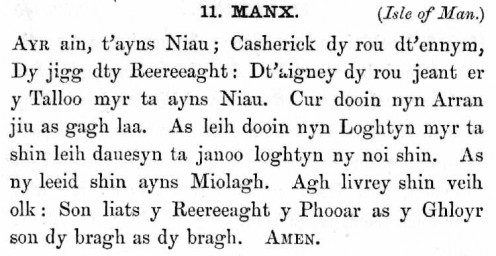
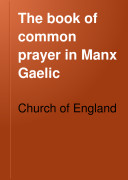
Written Manx
There is very little script or literature in Manx, but what does exist is The Book of Common Prayer which was translated into Manx by John Phillips, a Welsh born Bishop of Sodor and Man. (1605-1630). It was translated in 1610 and was the first written piece of work in the Manx language using an orthography based on Welsh. This translation, however, was not published until 1894.
The Book of the Dean of Lismore, uses early Manx script and does have some similarities with the orthography found in Scottish or Irish Gaelic. Also, some orthographical English and Scottish English appear in some early Manx texts.
In the early 18th century, Bishop Thomas Wilson had his Principles and Duties of Christianity translated into Manx using an orthography based on English. This orthography with some modifications has continued to be used until today.
Orthography is the method of writing a language and includes, spelling, hyphenation, capitalization, work breaks, emphasis and punctuation.
By 1848 all Manx speakers also spoke English and by 1921 the Manx language had declined so much that few parents taught it to their children. They believed their children needed to know English to be successful in life even if they remained on the island.
In 1899, The Manx Language Society, in Manx, Yn Cheshaght Ghailckagh, was founded to help keep the language from dying out. By the middle of the 20th century only a few elderly native speakers remained. A scholarly revival was begun and a few individuals began teaching Manx in the schools. This is when Brian Stowell became involved in reviving Manx.
Although closely related to Irish and Scottish Gaelic, Manx looks quite different because of the different spelling conventions. However, Manx, along with Irish and Scottish Gaelic, are Q-Celtic languages.
Manx is also distantly related to Welsh (Cymraeg), Cornish (Kernwek) and Breton (Brezhoneg) These languages form the Brythonic branch of the Celtic languages and are also known as P-Celtic languages.
The Celtic languages all have a similar grammatical structure, but have relatively little vocabulary in common.Here are examples of the differences and similarities between the six Celtic languages for the phrase "What is your name? My name is . . .
- Irish - Cen t - ainm ata ort? Is mise . . .
- Scottish Gaelic - De an t - ainm a th'ort? Is mise . . .
- Manx - Cre'n ennym t'ort? Ta'n ennym orrym . . ./ mish
- Cornish - Pyth yw dha hanow? Ow hanow yu . . .
- Breton - Petra eo da anv? eo ma anv . . .
- Welsh - Beth ydy dy enw di? dwi /ydwi . . .
Look at the first word 'what' in all the languages. If the word begins with C or Q it is a Q-Celtic language and if the word begins with P or B it is a P-Celtic language. Both written words and sounds have developed from the Proto-Celtic languages.
You will notice that there are more similarities within each branch of these languages than between the Gaelic and Brythonic branches. And, the Gaelic languages are closer to one another than the Brythonic languages.

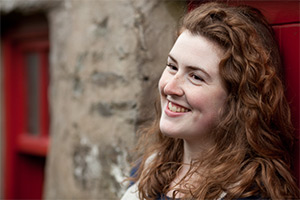
Ruth Keggin, Manx Gaelic singing
Modern Manx
In recent years Brian Stowell has discouraged against borrowing words from foreign languages to keep the Manx language as pure as possible. Stowell prefers that Manx speakers refer to modern Irish and Scottish Gaelic for words and inspiration to make up for the deficiencies in the Manx language.
The Manx language has been recognized under the European Charter for Regional or Minority Languages and Manx is one of the regional languages recognized under the British - Irish Council.
In 1992 The Manx Language Unit was formed. Brian Stowell was put in charge of all aspects of Manx language teaching and accreditation in the Isle of Man schools. He increased the interest in studying the Manx language and encouraged a sense of ethnic identity along with it.
Stowell also has a radio broadcast in Manx that is heard throughout the island and there are newspapers and magazines published in Manx. At this time there isn't a Manx television station or broadcast, but the islanders hope for this in the near future.
Today, Manx is taught as a second language in all primary and secondary schools on the Isle of Man and also at the Isle of Man College and Centre for Manx Studies. Degrees in Manx are available from these two institutions. Also, the University of Edinburgh (Scotland) offers an Honours course in the culture, history, and language of the Isle of Man.
The first native speakers of Manx (bilingual with English) are just beginning to emerge from the children brought up by Manx-speaking parents. For these children, primary immersion education in Manx is provided by the Manx government since 2003.
Once declare extinct, the Manx Gaelic language has enjoyed quite a robust revival on the Isle of Man and thanks to the foresight and diligent works of Brian Stowell, Manx Gaelic is alive and well on the Isle of Man and adds a great deal to the culture of the people living on the island.
Sources:
www.omniglot.com/writing/manx.htm
www.bbc.com/new/magazine-21242667
www.manxnationalheritage.im/explore-the-island/about-the-isle-of-Man/manx.language/
www.gov.im/lib/docs/mnh/education/factfiles/Manxlang.pdf
www.infoplease.com/country/isle-of-man.html
www.visitisleofman.com/iom/culture.xml
www.isle-of-man.com/manxnotebook/fulltext/hist1900/ch12.htm
